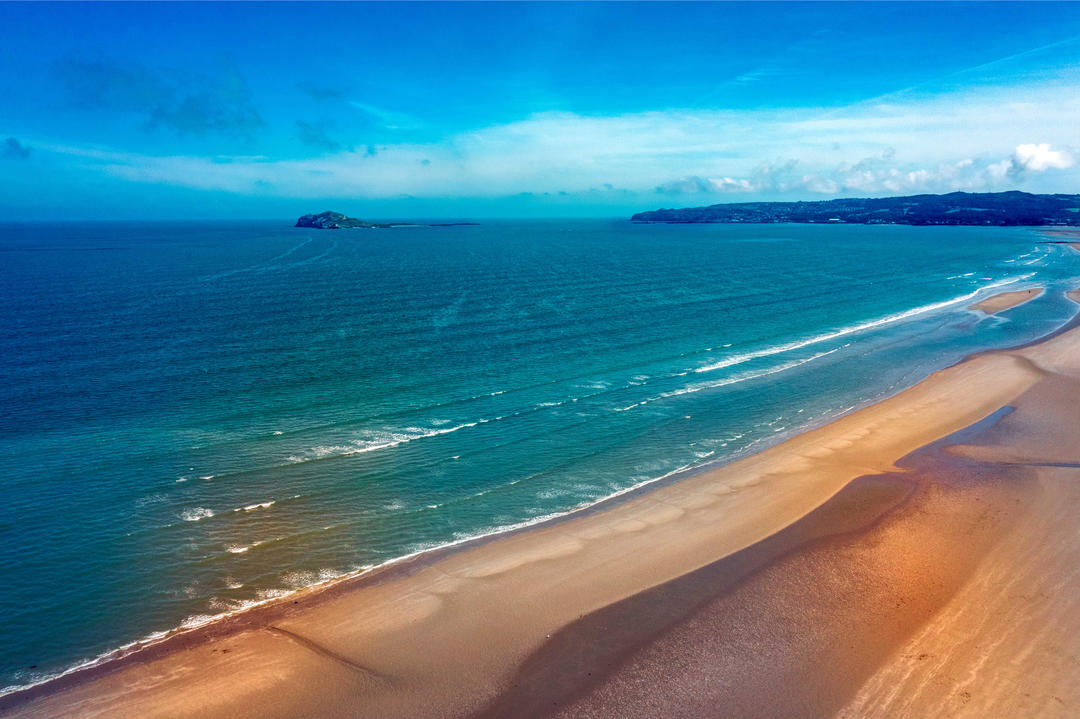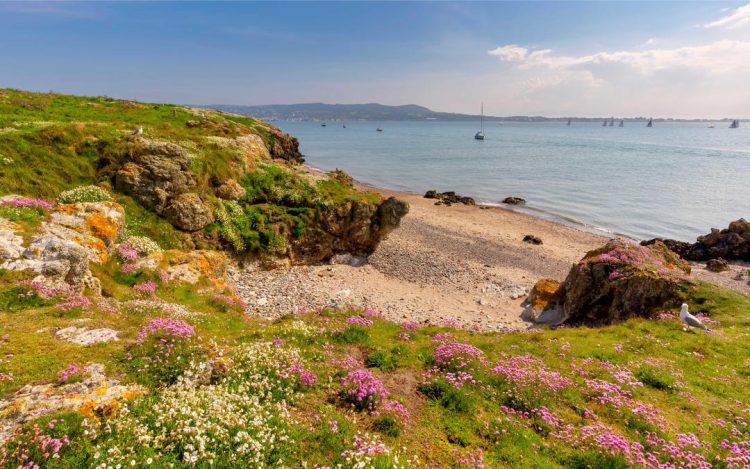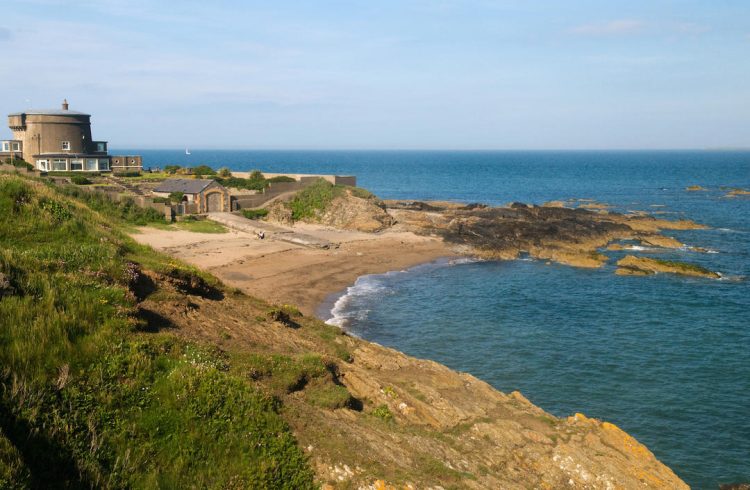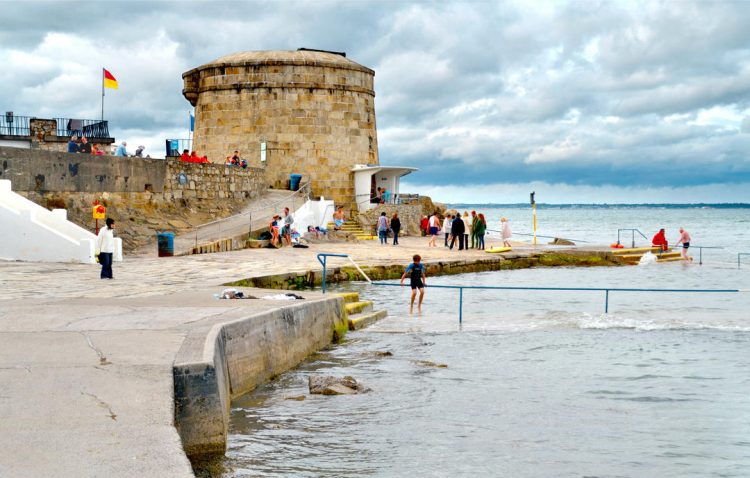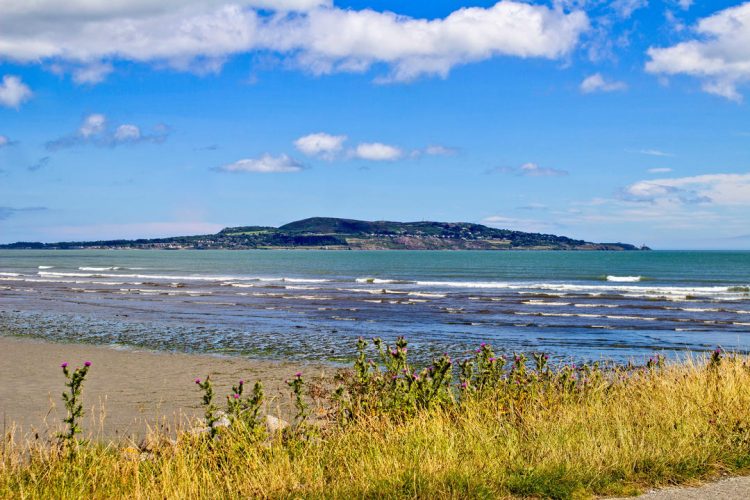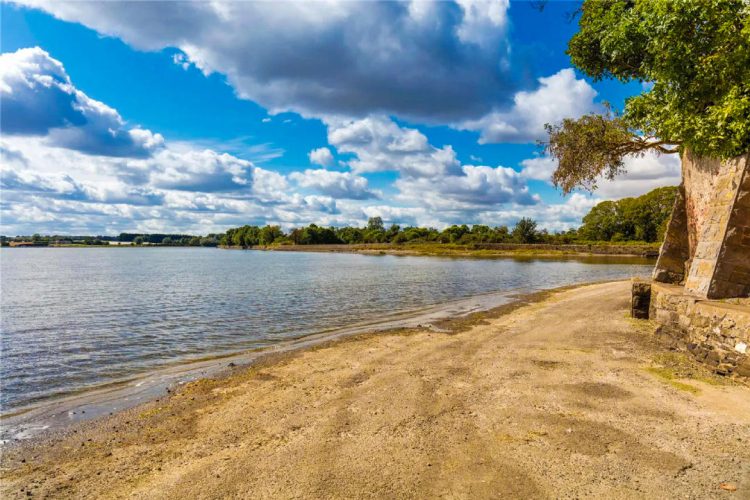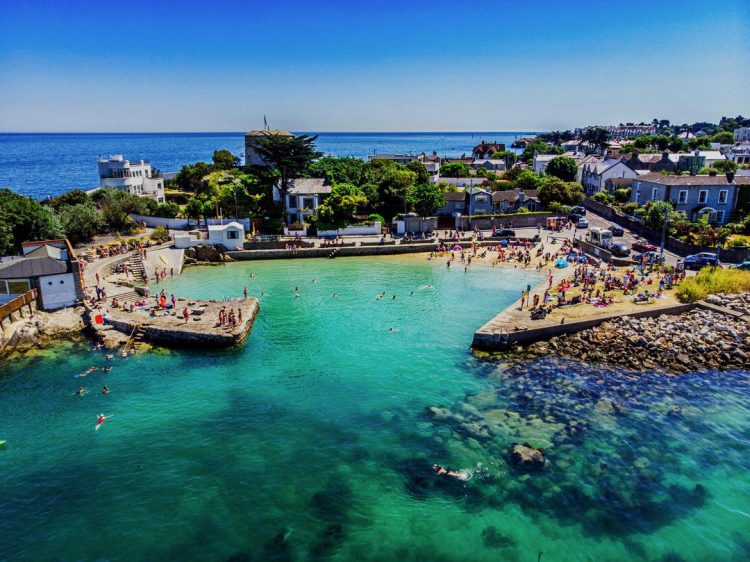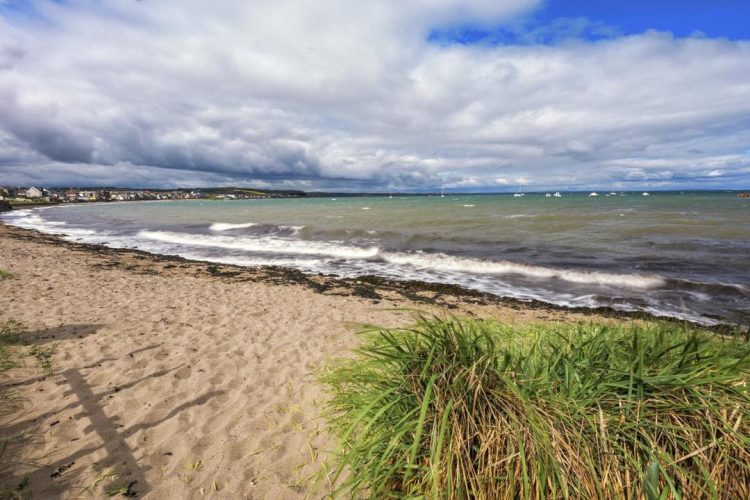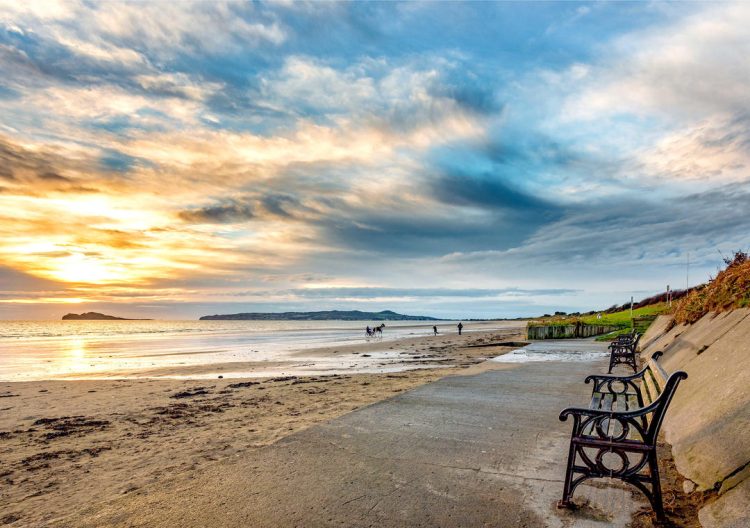Dublin is located at the mouth of the River Liffey near the bay, so it is not surprising that there are many beaches within the city and beyond. Due to the northern climate, you can only comfortably swim here on the warmest summer days (the water on the hottest days warms up no higher than +18), but this does not prevent people from coming to the coast for walks, picnics and water sports.
It is worth considering that not all beaches are suitable for swimming. The ban is always indicated on special signs or a raised red flag indicates this. It is also a good idea to check the local news before you go to make sure that no bacterial or other contaminants have been found in the water.
Burrow Beach
Burrow is a beach located in the suburb of Sutton in the north of Dublin. It is a strip connecting the mainland with the Howth Head Peninsula. It is 1.2 km long, most of which is sand dunes. Burrow Beach rarely gets crowded, except on really hot days. It offers great views of Ireland’s Eye. The beach is easily accessible by public transport.
Portrane (Portrane Beach)
Portrane Beach is located in the village of the same name north of Dublin. This is a two-kilometer sandy strip where locals and frequent travelers like to walk. The water here gets deep quite slowly, which is great for children. Even in peak season, you can always find a free place to relax at Portrane Beach.
Seapoint (Seapoint)
Seapoint is one of three Dublin beaches awarded the Blue Flag for its cleanliness. There are steps leading down to the water of Dublin Bay, making swimming at high tide extremely comfortable. At low tide, you need to be careful not to get hurt by the rocks that come up to the surface. At the northern end of Seapoint stands a Martello tower, built in the early 19th century.
Balscadden Beach
Balscadden is one of the best places to relax in the Dublin suburb of Howth. The beach is located at the foot of the cliff and the only way to get to the water is by stairs. During high tide you can swim here without any problems, and when the water recedes it becomes not very pleasant due to the large amount of seaweed. Seals can often be seen near the shore, but they do not swim closer than 100 meters to people. Balscadden Beach offers excellent views of Dublin Bay and Ireland’s Eye. It is a popular spot among divers.
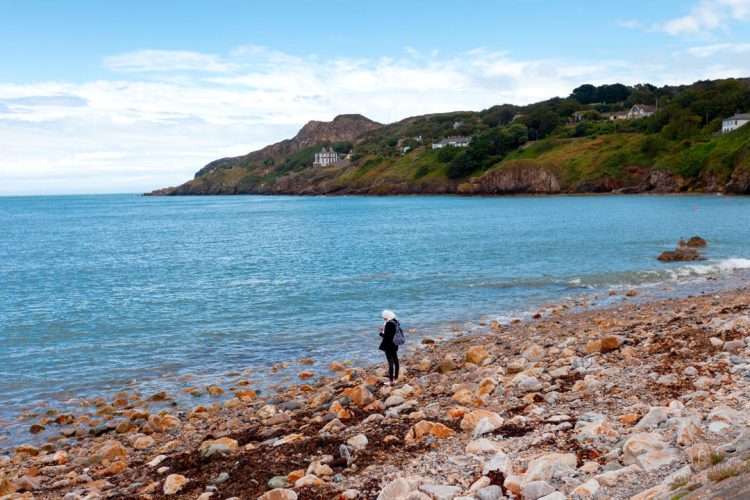
Killiney (Killiney Beach)
Killiney is a beach at the southern foot of the hill of the same name. It has the prestigious Blue Flag award. The surface varies from sand to pebbles, and there is a hidden cave on the northern part of the coast. Around Killiney Beach there are fields dotted with heather and other flowers. Lifeguards work here in the summer months. The water depth changes quite quickly, so swimming requires some skill.
Dollymount Strand
Dollymount Strand is the closest large beach to the center of Dublin. It is located on the artificial Bull Island and occupies all 5 kilometers of the coast. In summer, there are lifeguards on duty, and mobile bars and food stalls open. In addition to swimming, Dollymount Strand is popular for kitesurfing and kayaking. After a day of active water sports, it’s nice to have a picnic among the sand dunes.
Donabate Beach
Donabate is a 2.5-kilometer-long sandy beach with many dunes north of Dublin. It is a good place for a family holiday due to its shallow depth. The area is also ideal for walking and canoeing, with views of Lambay Island, Howth Head and the Malahide Estuary from Donabate Beach.
Portmarnock (Portmarnock Beach)
Portmarnock is the third beach in Dublin to be awarded the Blue Flag, as well as the Green Coast award, which is given for environmental friendliness. It is often called the Velvet Strand because of its smooth sand. It is a shallow coastline with calm waters and good conditions for kayaking. Portmarnock Beach is surrounded by sand dunes leading to a golf club. In the early 20th century, there was a makeshift airstrip here.
personal strip for Australian pilot Charles Smith.

Сандиков (Sandycove Beach)
Sandycove Beach is located in South Dublin in a cozy harbor. It is small in size and has a sandy surface. You can enter the water directly from the beach and go down the stairs from the pier. This place is mentioned in the opening scene of the famous “Ulysses” by James Joyce. The views of Sandycove Beach are a separate attraction. There is also a traditional Irish swimming pool, the Forty Foot, open all year round.
Skerries (Skerries Beach)
Skerries Beach is located in the fishing village of the same name, located on Red Island, 45 minutes from Dublin city center. The southern coast is ideal for swimming for adults, and the northern coast is ideal for children due to natural barriers that prevent the formation of waves. Not far from Skerries Beach there are excellent restaurants and cafes where you can taste the freshest seafood.
Malahide Beach
Malahide is one of the few beaches in Dublin where swimming is prohibited all year round. However, this does not stop it from being a popular holiday destination. People come here for the beautiful views of Lambay Island and the surrounding beaches, as well as for walks along the bay.

